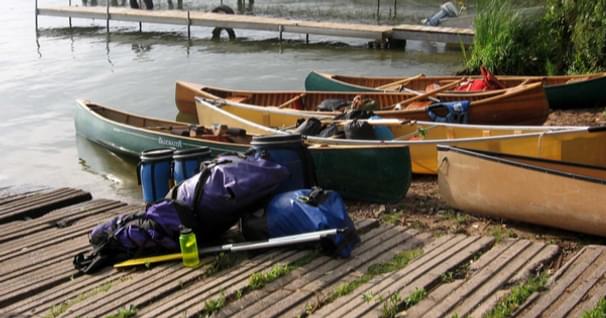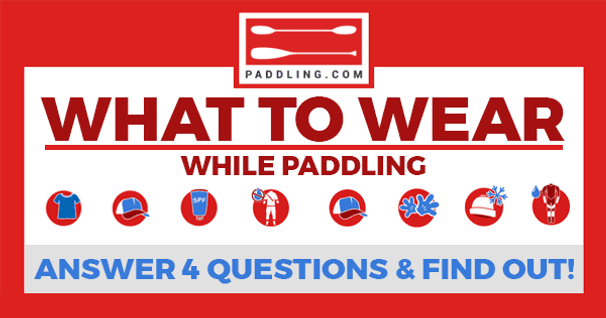Tandem Canoe Basics - 4 Essential Strokes
The key to tandem canoeing is to understand your role at whichever end of the boat you are paddling in. A canoe is essentially an elongated oval with a lever on each end. The cool thing is those levers can work at an infinite number of angles, their speed and strength can change on a dime and their reach can be adjusted for maximum efficiency. A master canoeist makes subtle adjustments to their paddle to effortlessly propel and maneuver the canoe with extreme precision. Guess what? A beginner can too, perhaps with a little splashing and banging at first. It’s as simple as pushing and pulling on your paddle and working together with your partner.
Basic Parts of a Canoe and Canoe Paddle
First off let's name the Basic Parts so we can refer to them later:
Canoe Parts
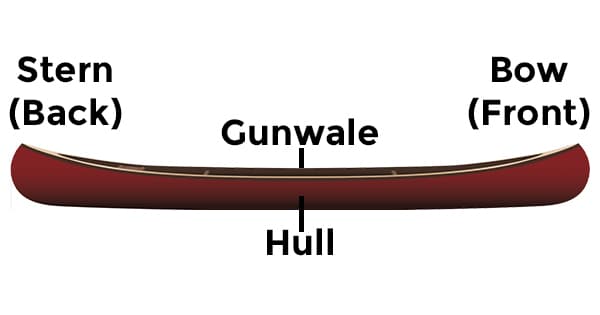
Paddle Parts
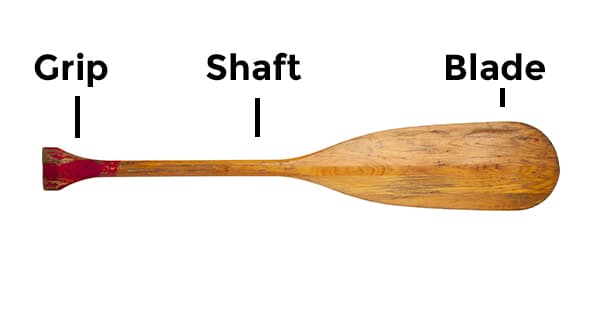
The 4 Basic Strokes
Draw
The draw stroke pulls the boat toward your paddle-side.
- Turn your shoulders to face your paddle side. Get both hands over the water outside of the gunwale (as much as your balance allows).
- Reach straight out from your hip with your blade as far as you can keeping the shaft as vertical as possible.
- Put the whole blade in the water and pull back toward the hull of the boat pushing out slightly with your grip hand.
- When the blade gets close to the boat, drop your grip hand forward slicing the blade out of the water.
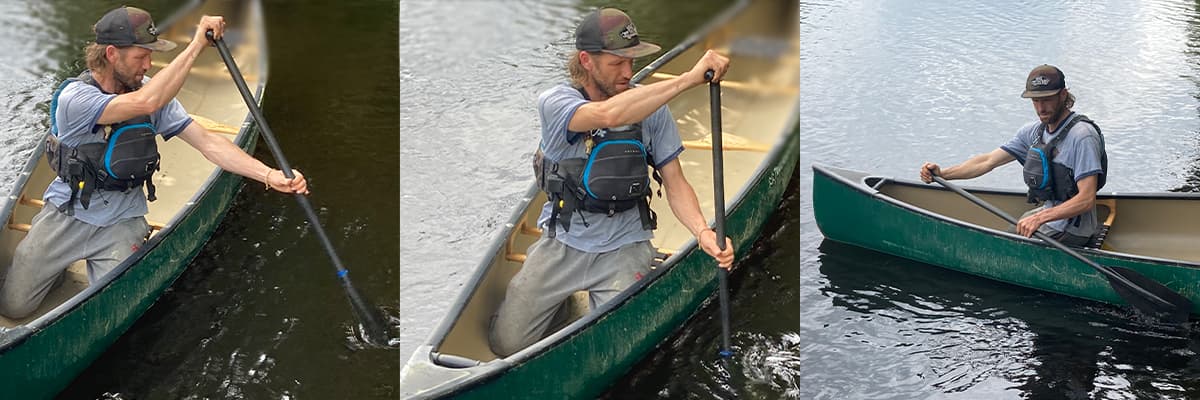
Pry
The pry stroke pushes the boat away from your paddle-side.
- Turn your shoulders to face your paddle side. Hold your paddle vertically beside your thigh against the gunwale with the blade in the water, flat against the hull (the thumb on your grip hand should be pointed toward the stern).
- Rest your shaft hand on the top of the gunwale and pull in on your grip hand using the gunwale as a fulcrum.
- Once your grip hand is about 1⁄3 of the way across the boat, stop, turn your paddle so your grip hand thumb is pointing away from the boat and bring your paddle back to vertical, slicing the blade through the water, back toward the boat.
- Turn your paddle so your grip hand thumb is pointing to stern and repeat.
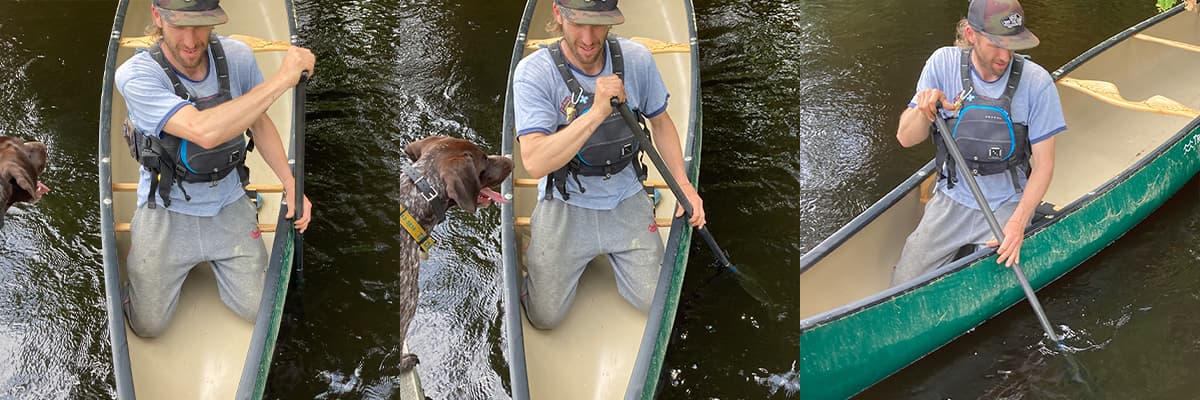
Notes on using draws and prys: When the boat is stationary, if both paddlers do the same stroke (draw or pry) the boat will pivot in one place. If the bow and stern paddlers do opposite strokes the canoe will move sideways in the water.
Forward stroke
This stroke moves the canoe forward.
- Hold your paddle vertical with both hands over the gunwale of the boat and your grip hand thumb pointing away from you.
- Reach forward as far as you can, try to keep your body upright and rotate your shoulders for reach as opposed to leaning forward.
- Put the whole blade in the water and pull back until the blade gets to your hip.
- Drop your grip hand across the boat lifting the blade from the water. Repeat.
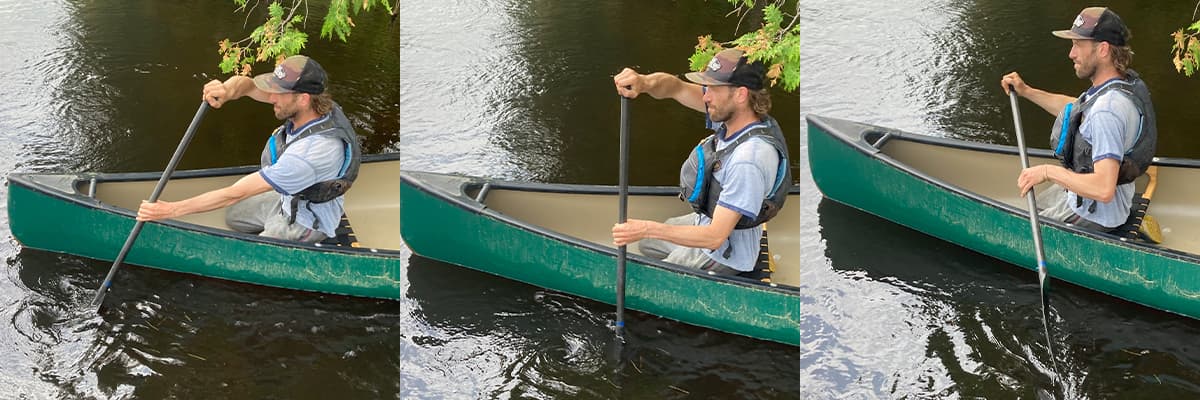
Stern Paddler Notes: When the boat is moving forward it is most effective for the stern paddler to use draws and prys to control the direction of the boat while the bow paddler continuously paddles forward. By lowering your grip hand and reaching your blade back toward the stern of the boat you can use small draws and prys, near the stern like a rudder, to keep the boat going in a straight line.

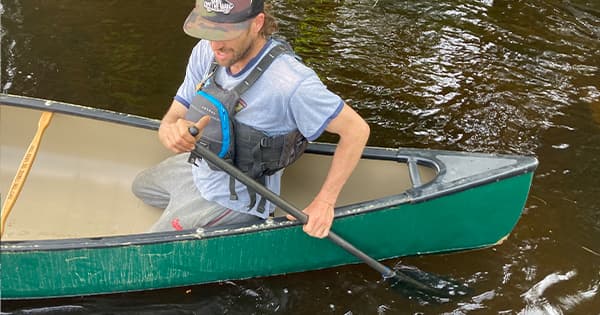
Backstroke
This stroke moves the boat backward.
- Rotate your upper body toward your paddle side. Hold your paddle with both hands outside the gunwale over the water with your grip hand thumb pointing away from you.
- Place your whole blade in the water just behind your hip. Push forward with your shaft hand as far as you can, at the same, pull back with your grip hand.
- Drop your grip hand across the boat lifting the blade from the water. Repeat.
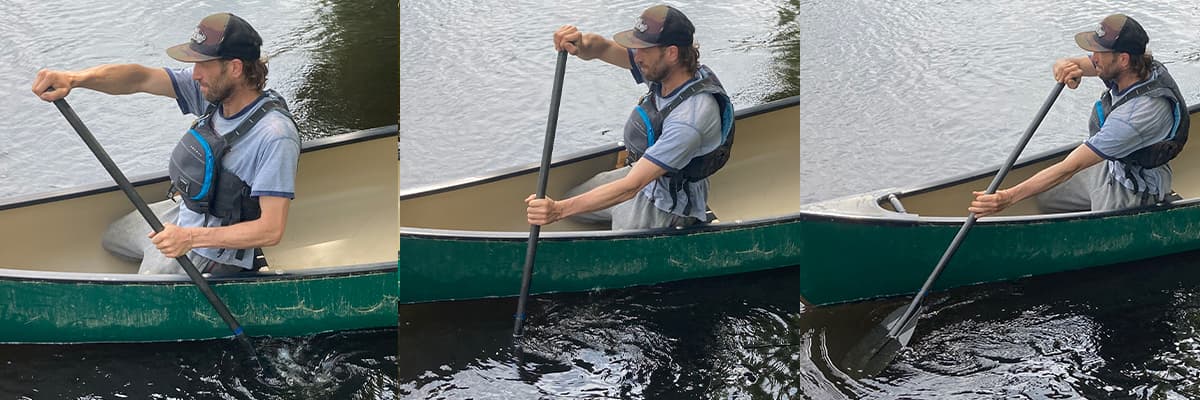
Bow Paddler Notes: When the boat is moving backward it is most effective for the bow paddler to use draws and prys to control the direction of the boat while the stern paddler continuously paddles backward.
One could argue that every canoe stroke is some version of these 4 basics. Once you master the basic strokes you can blend them together, change the length and speed of your strokes and adjust the angle of your paddle shaft and blade to smoothly maneuver your canoe in any direction. Pick a paddling partner who you like to laugh with, find a calm, sheltered body of water and get out there and give it a try!
Inspired by wanderlust and a passion for rivers, Adrian's paddling addiction has taken him across the globe. After pursuing his degree in Outdoor Recreation and Tourism Management, Adrian eventually settled in Palmer Rapids, Ontario. Here, he has worked for over a decade as the Director Of Operations at The Boundless School.
Related Articles
You may recall Abraham Maslow ‘s hierarchy of needs from ninth grade social studies. Maslow says, you…
With good technique and a little practice, regardless of size or strength, most people can perform a…
I had an argument with my 10-year-old son the other day about spending $200 on a hockey stick. I heard…
Wondering what to wear when going paddling? Answer 4 quick questions and instantly learn what you need…
